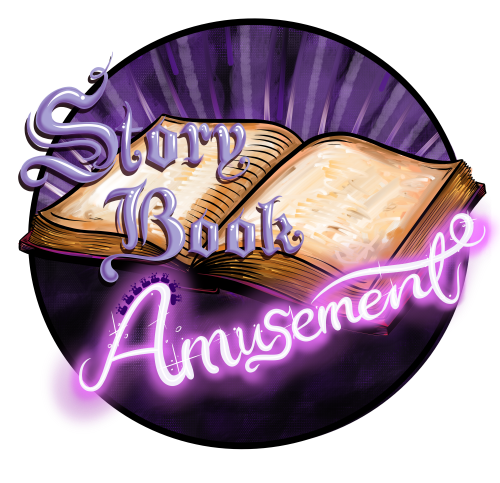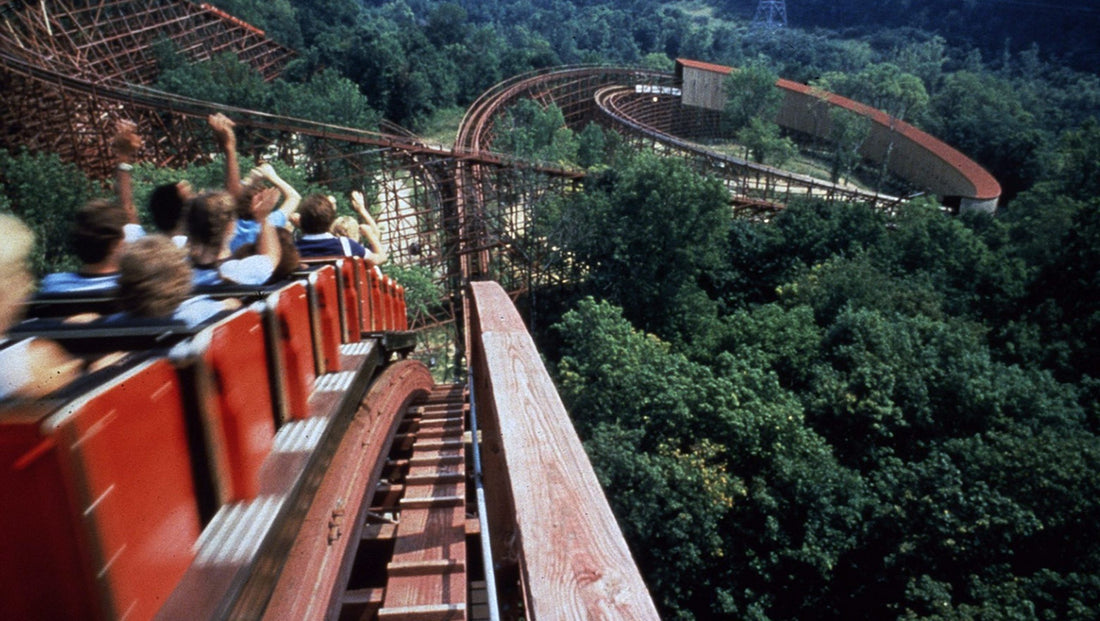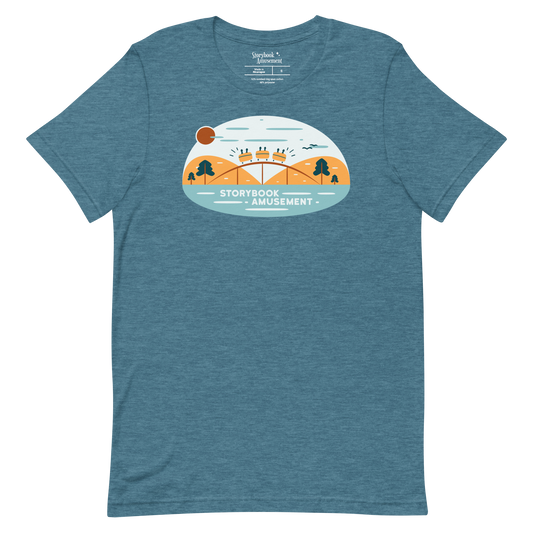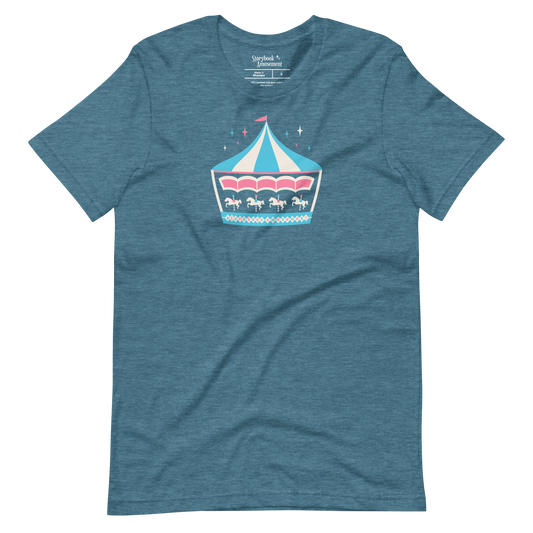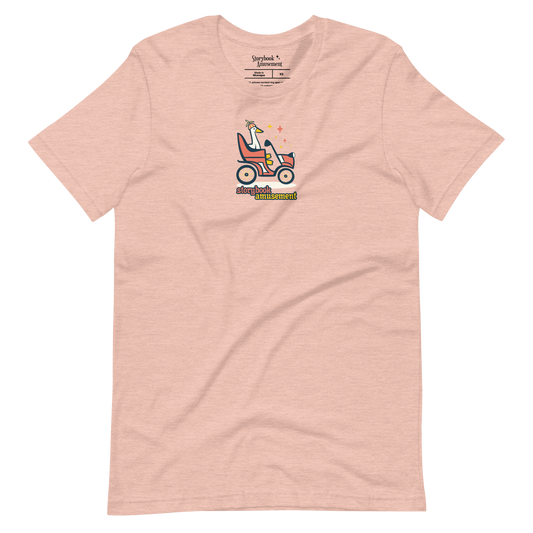An Unpredictable History
What makes roller coasters so thrilling? Maybe it’s the feeling of being out of control, or losing your sense of direction, or the unpredictability of not knowing what comes next. Putting it into words is almost impossible.
Only one dicey roller coaster captures all that excitement in a single experience: The Beast at Kings Island.
The Beast has a legendary status in the coaster community, and for good reason; it opened as the tallest and fastest wooden coaster in the world. Although those feats have since been surpassed, The Beast for nearly half a century has comfortably held the record of being the longest wooden coaster in the world.
However, The Beast didn’t earn its revered reputation status off stats alone. This is the beastly brilliance of King Island’s colossus of a coaster: The Beast.
Watch on YouTube
This article is available in video form with added visuals. Click HERE to watch it.
Facing the Unknown
There’s something about the fear of the unknown that makes our imaginations run wild. The unfamiliarity and uncertainty of the unknown can make us feel vulnerable, but overcoming it all can be fulfilling.
Cincinnati's Classic Amusement Park
The unknown—that’s what Cincinnati’s favorite amusement park was facing by the mid-20th century. Coney Island had beautiful landscaping, grand roller coasters, and an unfortunate flooding issue. Having suffered several floods, the park had to make a significant change if it were to have a thriving future.
By 1969, Coney Island was under new ownership, and a few years later, the park would change forever. Coney Island moved many of its beloved attractions to a new location, forming an all-new theme park: Kings Island. Cincinnati's Coney Island fizzled with the opening of the all-new Kings Island in 1972.
Kings Island Takes the Throne
Kings Island quickly became a well-liked park in the Cincinnati area, and also gained swift national attention; in its first decade, the young park was seen on TVs across the U.S. in episodes of widely popular programming, such as The Brady Bunch, and being the venue for one of Evel Knievel’s record-breaking stunts.
Kings Island wanted to continue its streak of national recognition and had sought to break records of its own.
Beastly Thrills on the Way
Park leadership looked to add a new thrill ride by the late ‘70s. Kings Island would need the help of a sound veteran to create the ambitious attraction; thus, Kings Island approached a highly accomplished roller coaster designer and old friend, John C. Allen.
Allen, being one of the final remaining designers from the golden age of coasters earlier in the century, was well-known in the industry for his many popular wooden coasters throughout the decades. He had previously worked with Kings Island, creating a dual coaster—The Racer—that has been credited for sparking a coaster renaissance in the ‘70s.
That was a few years prior, but now that Kings Island had its footing, the park was ready for Allen to build its next hit. Despite that, the accomplished coaster designer turned down the opportunity as he had plans to retire. All was not lost, however, as Allen agreed to consult on the project.
Kings Island, hoping to have a veteran lead the project, was once again faced with uncertainty. The park moved forward with the trustworthy Allen serving a limited role as a consultant. Kings Island was forced to make a decision, choosing to build its next major coaster in-house. Constructing a major coaster with an internal team was a first for Kings Island. Park leadership had to put their trust in themselves—to put their trust in the unknown.
Uncharted Territory
Constructing an In-House Coaster
To take on the job, Kings Island turned to the director of the park’s construction, maintenance, and engineering divisions: Charles Dinn. He had been with the park for several years, dating back to the Coney Island days. Dinn even had the foresight years prior to take detailed measurements of the old Shooting Star wooden roller coaster at Coney Island in preparation that it may be rebuilt at the new Kings Island park.
In favor of new over nostalgia, Kings Island passed on the chance to bring back the classic coaster. Instead, the park would build its new coaster on 35 acres of undeveloped woods. Charles Dinn teamed up with Curtis Summers, who had previously helped maintain the support structure of the aforementioned Shooting Star coaster. Jeff Gramke and Al Collins worked on the design, starting in 1976.
A Daunting Task
The project as a whole was described as a beast to work on, as the process took years to complete. Everything about this record-breaking coaster had to be done by hand, starting with surveying the land; the massive area wasn’t ideal for a traditional coaster with its steep dropoffs and hilly terrain—characteristics they had no control over—but the designers used those rocky qualities to their advantage. Still, it was no easy task.
While engineering the layout, the formulas had to be done by hand as well, with no sophisticated calculators or computers at the time. The process was laborious, taking two years to design the ride and another several months to construct it. Construction was completed in March 1979, using well over 100 miles of lumber to assemble the massive coaster.
The team working on the project had dealt with coasters in the past, but nothing to the scale of what they were creating for Kings Island. It was uncharted territory for any coaster designer, regardless of experience; this beast of a coaster was set to be the tallest and longest in the world.
A Legend is Born
During development, the coaster still needed a name. The park’s public relations manager, Ruth Voss, thought the name was right there under everyone’s noses for this beast of a project: The Beast. She pitched the idea to park leadership, and a legend was born. A national advertising firm, Lawler Ballard Little, created the ride’s award-winning logo, which would later win over the hearts of countless coaster enthusiasts.
The team that created The Beast had a willingness to step into the unknown that would forever change not just Kings Island, but also the coaster industry at large.
The Beast is Unleashed
Leading up to its opening, The Beast had a great and elaborate marketing campaign—one of the first at this scale for a roller coaster. The hype and anticipation grew up to the debut of the record-breaking wooden coaster.
Fittingly, on Friday the 13th of April 1979, The Beast was ready for its initial riders. The first to face The Beast was a train full of Kings Island leadership and those who worked on the coaster. The Beast opened to the public the following day, Saturday, April 14.
With some thematic elements, the true beauty of the coaster’s theme is its simplicity.
The Beast by stature is a spectacle, but it’s the allure of the unknown that draws riders to it. The colossal coaster is shrouded by thick woods—the perfect setting for such a mysterious ride. The attraction’s premise, while having some history, is quite abstract for the most part: a mythic, lurking beast never to be seen and a fearless forest that engulfs a massive coaster. Surrounded by endless nature, The Beast is an inexplicable ride experience that rumbles through the dense woods.
The Beastly Ride Experience
Once riders secure themselves ahead of the completely out-of-control ride, The Beast starts by dispatching out of the eerie wooden station. The train crawls through drawn-out turns before making it to the lift hill. On the ascent, each click of the chain builds anticipation. Climbing up high on the lift hill is almost like being alone, venturing deeper into isolation. Facing a boundless forest, dread sets in as the train points down and plunges from high in the sky into an underground tunnel.
The track dives throughout the rough terrain and races by infinite trees. The train eventually speeds into a long straightaway before veering into jolty, low-to-the-ground elements. Whipping into an enclosed helix, The Beast rips and wanders toward the second lift hill.
For most coasters, one lift hill is enough—the train can make it through the end of the track with enough momentum. For The Beast, well, that’s a different story. The Beast keeps a good pace throughout the ride, clawing its way through the woods, but The Beast has a finale so grand it needs a second lift hill to finish the expedition.
Approaching the Grand Finale
The slow climb calms the growling Beast for just a moment as riders get a quick chance to catch their breath. Anticipation seeps into the adrenaline-fueled journey as the train rises above the treeline. The lift hill is perfectly aligned with the park’s Eiffel Tower scale replica, surrounded by bending coasters scattered across the sky on either side.
Once loose from the lift hill’s chain, The Beast slowly pushes into a rapid descent. This lift doesn’t lead to a major drop—no, the train turns to the left and leans through a straight slope that quickly picks up steam. It’s an awkward coaster element compared to the launches and swift inversions on modern coasters, but The Beast impresses in an old-school way. The moment is a rapid descent, like slipping into another state of mind.
The Beast tears to the left into a massive enclosed helix. The crashing dash of the roaring helix goes on for an eternity. Some enthusiasts say this is their favorite ending to any coaster, and it’s a thrill that holds up after several decades. The helix, contained inside a tunnel, is the final wrath of the untamed Beast. The coaster slashes through the forest in a few final elements before creeping back into the station where guests are freed, escaping the grip of The Beast.
The Beast is imperfectly perfect with its inconsistent pacing that creates bursts of sudden intensity. In other words, The Beast is unpredictable, and that’s even truer upon nightfall.
Legendary Night Rides
The brutal Beast is only made fiercer once the sun sets. As a blanket of darkness covers Kings Island, guests load into the queue for an unforgettable night ride on The Beast; it’s a rite of passage. The ambiance is amplified; the only light source comes from the misty moon above and a soft glow peeking over the silhouettes of trees, painting a lush night sky. In the dark, the sensation of The Beast is made more intense, as every drop of the thunderous track has a bigger impact.
The Beast at night is swallowed by darkness, leaving riders isolated in the surroundings of nature as the track ventures deeper into the unknown, like a rampage through Sleepy Hollow. The pitch-black tunnels are so dark; it’s almost like sensory deprivation, if not for the wind in your face and the chaotic, trembling turns. The Beast tears apart the restfulness of nighttime with the shattering sound of the track. The mystery of what lies ahead builds up even more anticipation—an experience enthusiasts travel from all over to enjoy.
The nighttime experience is like a headlining event, with a station full of hyped-up parkgoers gathered around, cheering as trains of clapping riders shuffle in and out. The excitement is contagious as a perfect way to cap off a visit to Kings Island.
A Special, Time-Tested Coaster
The Beast is in complete control the whole way, making it feel out of control for riders. The coaster is beautiful not only for its classic design, but also for how it flows in the forest. The unpredictable terrain gives the coaster a rigid relationship with nature, one that’s been beloved for several decades.
The Beast's Legacy
The Beast is a coaster to be respected, and Kings Island has honored the fan-favorite in many ways. As a spin-off of The Beast, Kings Island renamed its junior wooden coaster The Beastie, also installing a tunnel to the layout just like its big sibling.
The most infamous and deplorable tribute to The Beast was the coaster’s sequel. Credit to The Beast—not many coasters warrant a sequel. Kings Island debuted Son of Beast in 2000 as the first wooden coaster to surpass 200 feet and the first modern wooden coaster to feature a vertical loop. After several incidents and issues, the ride closed in 2009, and the structure was demolished in 2012.
A Fierce Past and Roaring Future
Despite a disappointing tribute, The Beast itself has been well cared for over the years. Kings Island has made continual changes and adjustments since the ride’s opening year—such as adding enclosed sections and reprofiling the track—almost as if the coaster will always be under construction. Being retracked in recent years, The Beast glides through its classic layout with grace and grit.
As for the importance of The Beast, it’s more than a coaster—it can be called the grandfather of modern wooden coasters. The rides creators, Charles Dinn and Curtis Summers, moved on from Kings Island to form their own firm, Dinn Corporation, manufacturing some iconic coasters. Relatives, engineers, and professionals from the duo’s circle also started wooden coaster companies that built other groundbreaking rides. Many major wooden coasters can be traced back to what Kings Island accomplished back in the 1970s—a task of facing the unknown and overcoming uncharted territory.
The rattle of The Beast is felt far beyond the chilling woods of Kings Island. After operating for several decades with no end in sight, The Beast is a coaster that’s in charge of the unknown and can’t be tamed.
